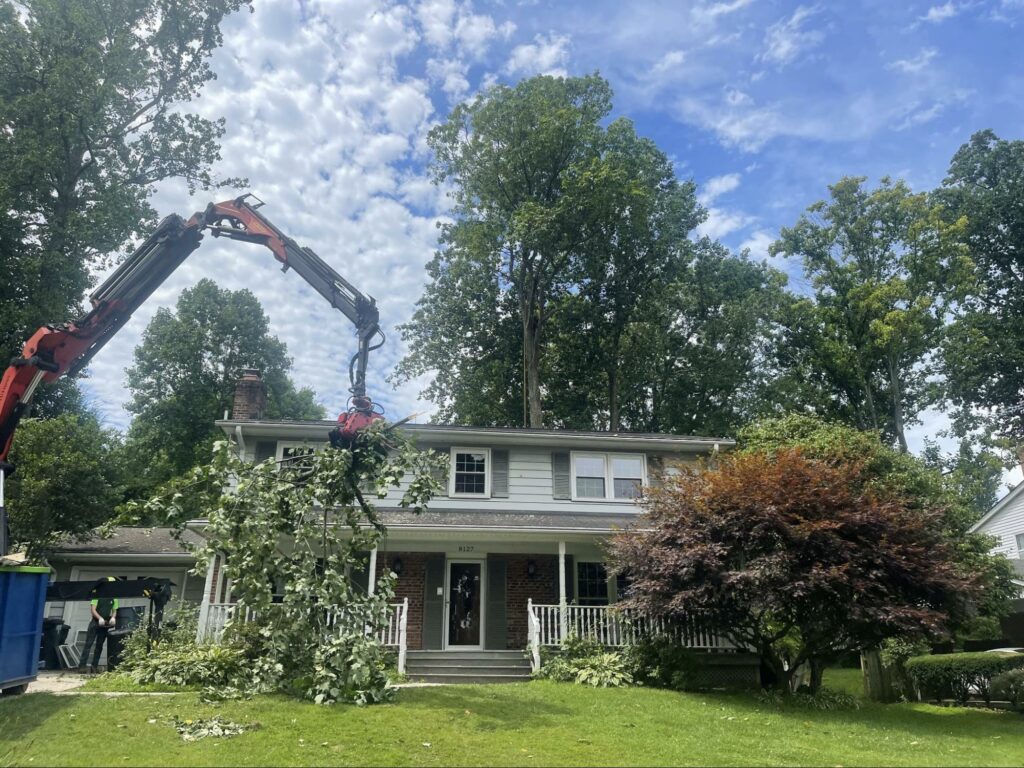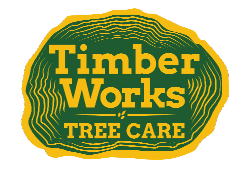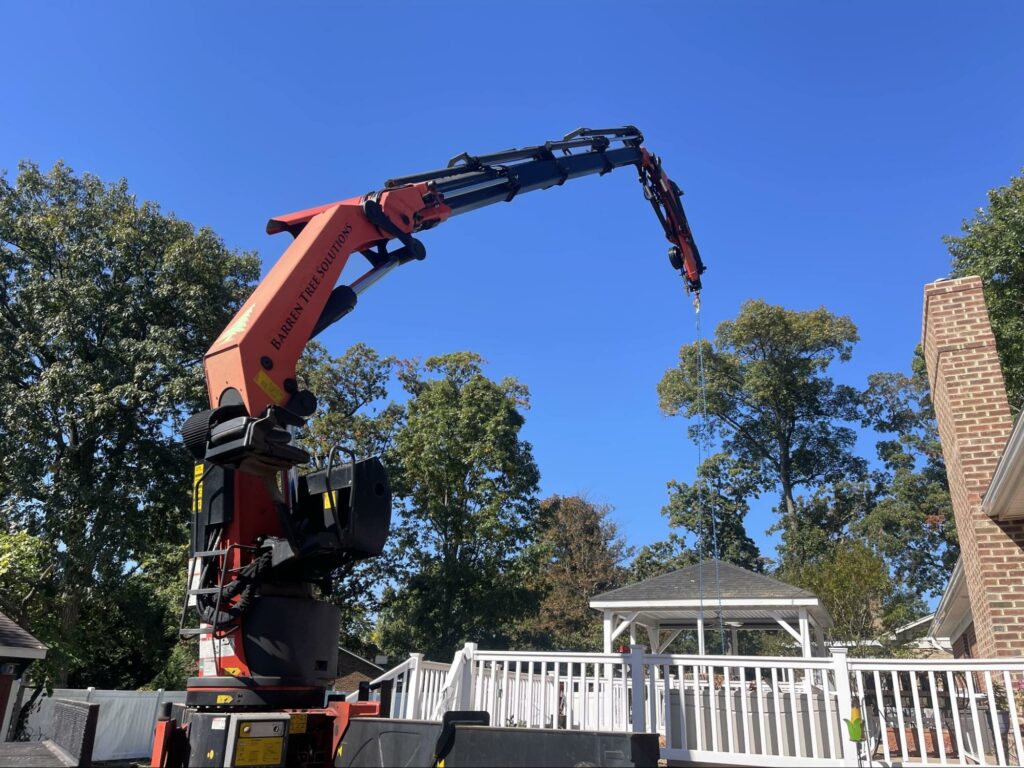Although your favorite tree may stand tall now, one of many events (including disease, structural instability, and safety concerns) could result in tree removal services. Yet many homeowners have little knowledge about removal best practices and service prices. In this comprehensive guide, we’ll discuss how to identify a hazardous tree, safety tips recommended by experts, and how to calculate your final service price.
This overview will outline everything you need to know about safe tree removal:
Signs You Need Tree Removal
- Disease or Decay: Look for visible signs of tree disease and decay—dead branches, fungal growth, and trunk rot. These indicate compromised structural integrity, and trees that display them pose risks of falling and property damage.
- Leaning or Unstable Trees: Trees with a significant lean or displaying signs of instability, especially after storms, are hazards. Removing them can prevent accidents and property damage.
- Root Damage: Extensive root damage, often due to construction or disease, weakens a tree’s stability and necessitates removal to mitigate risks.
- Overcrowding Trees: Trees planted close together must compete for resources, leading to stunted growth and instability. Removing one or more trees close to one another promotes healthy growth and improves landscape aesthetics.
Safety Tips for Effective Tree Removal
- Assess the Situation: When Timber Works approaches a removal project, we thoroughly evaluate the tree and its surroundings for potential hazards like power lines or nearby structures. The removal process must avoid these elements.
- Use Proper Equipment: Next, we gather the necessary tools and safety gear, including chainsaws, ropes, harnesses, and protective equipment. Safe and effective equipment is one of the best reasons to hire local tree professionals with expertise.
- Anticipate the Direction of Fall: Our experts will determine the direction of the tree’s fall, clearing the area of obstacles and establishing escape routes. We also use proper cutting techniques to control the fall.
- Practice Safe Cutting: Professional cutting techniques help guide the tree’s fall, though we still avoid standing directly behind it during cutting.
- Disposal of Debris: We dispose of tree debris responsibly, leveraging mulching, recycling, or outright disposal at designated facilities. Wood can be repurposed for firewood or crafting if feasible.
Factors That Increase the Cost of Tree Removal
1.) Tree Size: Large tree removal requires more time, labor, and specialized equipment, which creates higher costs than small tree removal.
2.) Tree Condition: Diseased, decayed, or structurally compromised trees may require extra precautions or careful dismantling, increasing the complexity and cost of removal.
3.) Location: Trees in challenging or hard-to-access areas (like those close to buildings, power lines, or overhanging structures) require additional safety measures and skilled maneuvering, raising costs.
4.) Obstacles: Fences, sheds, or landscaping features near a tree can complicate its removal process, requiring extra care and potentially increasing costs.
5.) Emergency Removal: Emergency tree removal situations, such as storm damage or sudden tree instability, require an immediate response and may involve additional risks and costs compared to planned removals.
6.) Stump Removal: Removing a tree stump after a felling can incur additional costs, as stump removal demands specialized equipment and labor.
7.) Cleanup and Disposal: Proper disposal of tree debris, including hauling away branches and trunk sections, can contribute to the removal cost, especially for large trees.
8.) Accessibility: Easy access to the tree site can lower costs, while rugged terrain or limited access may require more effort and increase expenses.
Hire an Expert Tree Removal Service in Bluemont, VA!
Tree removal services in Bluemont, VA, are critical to property maintenance and safety. Recognizing disease signs and choosing Timber Works Tree Care over DIY options ensures effective removal while preserving landscape integrity. Consult our certified arborists and tree care professionals by calling (540) 254-5773 today.







